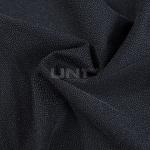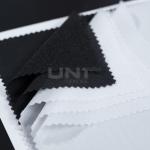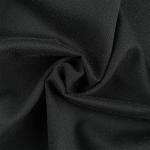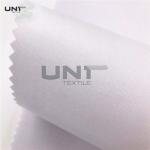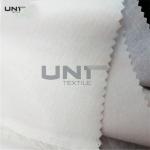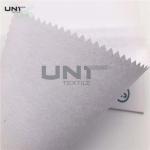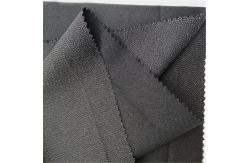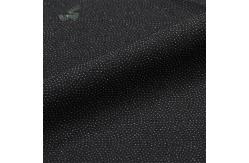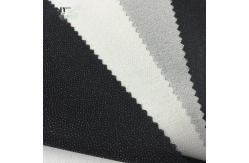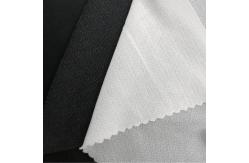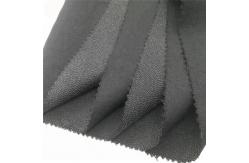Woven Interlining is an essential component in garment manufacturing, providing
structure, stability, and durability to various parts of clothing.
It is particularly used in areas that require reinforcement, such
as collars, cuffs, waistbands, and plackets. This type of
interlining is made from woven fibers, offering a firm yet flexible
finish that enhances the overall appearance and lifespan of the
garment. What is Woven Interlining?Woven interlining is a type of fabric support made by weaving yarns
together in a structured manner. Unlike non-woven interlining,
which is made from bonded fibers, woven interlining has a
grainline, similar to woven fabrics. This characteristic gives it
better drapability, making it an ideal choice for garments that
require a more natural, flexible movement while maintaining
structure. Materials Used in Woven Interlining- Cotton: A natural fiber that is breathable, durable, and soft to the
touch. Cotton woven interlining is commonly used in casual and
semi-formal garments.
- Polyester: Known for its durability, polyester woven interlining is often
used in garments that need more structure and wrinkle resistance.
- Poly-Cotton Blends: Combining the best of cotton and polyester, poly-cotton woven
interlining provides a balance of strength, comfort, and
cost-effectiveness.
- Wool: High-end garments, such as suits and jackets, may use wool woven
interlining for a luxurious feel and excellent shape retention.
- Viscose: A smoother, softer option often used for lighter fabrics where a
less rigid structure is desired.
Types of Woven Interlining- Fusible Woven Interlining: This type has a heat-activated adhesive on one side. When applied
to fabric using heat and pressure, it bonds securely, providing
quick and easy application.
- Sew-in Woven Interlining: In this method, the interlining is sewn directly into the
garment. This is preferred for delicate fabrics or higher-end
garments where heat from fusible interlining might cause damage.
Key Features of Woven Interlining- Structure and Support: Woven interlining provides essential support to areas like
collars, cuffs, and button plackets, helping garments retain their
shape over time.
- Breathability: Fabrics made from cotton or wool woven interlining allow for
airflow, making the garment more comfortable to wear.
- Flexibility: The woven structure allows for some flexibility, meaning it can
follow the natural movement of the garment while maintaining the
necessary stiffness.
- Durability: It is designed to withstand repeated wear and washing, ensuring
that the garment maintains its structure for a longer period.
Applications of Woven Interlining- Shirts and Blouses: Used in collars, cuffs, and button plackets to keep them crisp
and well-formed.
- Jackets and Suits: Woven interlining is applied to the front panels, lapels, and
collars to maintain the garment’s professional appearance.
- Waistbands: In pants and skirts, woven interlining reinforces the waistband,
preventing it from stretching out over time.
- Pockets: It is also used to strengthen the pocket areas to prevent sagging
or tearing.
Advantages of Woven Interlining- Improved Garment Structure: Provides the necessary stiffness without sacrificing flexibility,
which is essential for tailored and semi-structured garments.
- Long-Lasting: Resistant to wear and tear, making it an excellent option for
garments that undergo frequent use and washing.
- Versatility: Available in a variety of materials and weights, suitable for
different types of garments, from casual wear to formal attire.
Best Practices for Using Woven Interlining- Always match the weight of the interlining to the outer fabric.
Heavy fabrics need stronger interlining, while light fabrics
benefit from softer, more flexible interlining.
- When using fusible interlining, ensure the adhesive is
heat-activated at the right temperature to avoid damage to
sensitive fabrics.
ConclusionWoven interlining is a critical component for ensuring the
structure and durability of garments. By providing the necessary
support, it enhances the overall fit, comfort, and appearance of
clothing. Whether you're looking for fusible or sew-in woven
interlining, understanding its features, applications, and
advantages will help you choose the best option for your garments. |
